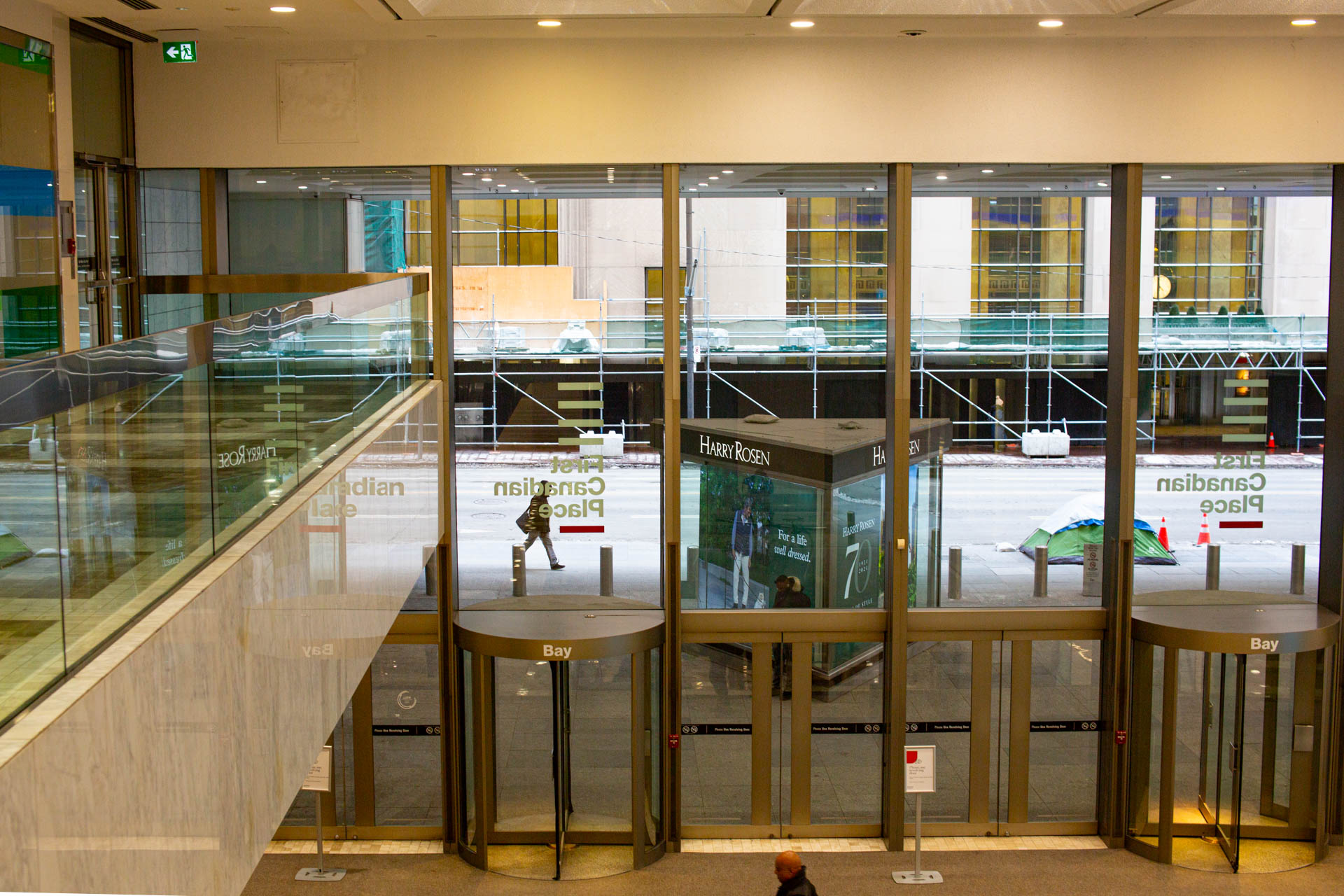As I walk down the streets of this city, I often find myself looking away. Sleeping bags occupy convenient corners. Inflated rent prices knock on—and threaten to knock down—the doors of my flimsy 5-foot apartment. I stand amongst a sea of labels and prices for far too long, interrogating the supposed necessity of so-called essentials. Why look at problems you can’t solve. I don’t know what the prices of my groceries are, but I do know I can’t do anything about it. I feel bad for the poor soul digging through the trash, and I feel worse for not feeding him, but the 16K in debt weighs heavy in my pockets, and my debit card weighs far too light. Somehow that’s just enough doubt to keep him in the corner of my eye.
So instead, I turn away; I turn my head down and try not to think about all the things I can’t do anything about. All the while, looming steel occupies the misty distance. Glimmering glass obscures office towers. The wealth disparity of this city is a fact that needs no citation but the rough tents and torn blankets serve the purpose anyway, and our eyes glaze over them all the same. The strange thing about this common fact is how well hidden it is. When you look straight at it, all you’re met with is marble towers, and logos so common you forget they were even there. Meanwhile, all the crests and coats of arms that glimmer across our corporate skies serve as nothing more than cheap magic tricks. They beg you to look at one hand, so you look away from the other. The bright lime green TD logo on the TD west tower hides a small white, “A CF property”. The BMO logo similarly should really read Brookfield. In this world of hypervisibility, the greatest show of power is remaining invisible. How much land, power, and wealth are obscured even as we walk past it on our commute to work. Large glass fronts ask us to look through instead of at; the transparency of banking institutions gives way to invisibility.
In a world that asserts its power by hiding it entirely, the act of bearing witness serves as an important act of negation. Similarly, the right to look becomes a tool towards the erosion and reclamation of power. Asserting the right to look—if only at shrouded curtains—becomes a crucial action and one we must hold ourselves steadfast to.

Salman Khalid is a photographer and conceptual artist specializing in visual storytelling, media, and perception. Working across photography, video, writing, and found imagery, his work explores how technology, media, and contemporary culture shape human experience. With a BFA in Photography Media Arts from Toronto Metropolitan University, he brings both creative and technical expertise to his practice.
Salman’s work critically examines themes such as the evolution of transportation technology, the transformation of film from art to product, and the impact of mass news imagery on empathy. His latest project, Edge of My Vision, investigates how corporate institutions render their power and influence invisible.
Beyond his artistic practice, Salman has experience in photography, video production, and post-production. He has worked on documentary projects, edited short films and music videos, and showcased his photography in exhibitions such as Fragments (Artspace TMU) and Flux (Toronto Metropolitan University). With a focus on structure and storytelling, he crafts visually and conceptually compelling narratives that challenge audiences to reconsider what they see—and what they don’t.
Whether behind the camera or in post-production, Salman is dedicated to using imagery as a means of storytelling—challenging perspectives, provoking thought, and revealing unseen realities.






